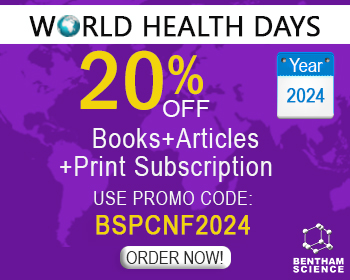Abstract
Homologation is a concept introduced by Gerhard in 1853 to describe a homologous series in organic chemistry. Since then, the concept has been adapted and used in medicinal chemistry as one of the most important strategies for molecular modification. The homologation types, their influence on physico-chemical properties and molecular conformation are presented and discussed. Its application in lead-identification and lead optimization steps, as well as its impact on pharmacodynamics/pharmacokinetic properties and on protein structure is highlighted from selected examples.
• Homologation: definition and types
• Homologous series in nature
• Comparative physico-chemical and conformational properties
• Application in lead-identification and lead-optimization
• Impact on pharmacodynamic property
• Impact on pharmacokinetic property
• Impact on protein structure
• Concluding remarks
• Acknowledgment
• References
Keywords: Homologation, Homologous, Molecular modification strategy, Drug discovery, Lead optimization, Organic compounds.
[http://dx.doi.org/10.2174/0929867053363540] [PMID: 15638729]
[http://dx.doi.org/10.1038/npg.els.0000715]
[http://dx.doi.org/10.1021/ja01280a022]
[http://dx.doi.org/10.14205/2309-4435.2013.01.01.6]
[http://dx.doi.org/10.1016/j.ddtec.2004.11.007] [PMID: 24981612]
[http://dx.doi.org/10.1021/j100876a049]
[http://dx.doi.org/10.1021/acs.jmedchem.7b01465] [PMID: 29360358]
[http://dx.doi.org/10.1021/acs.jmedchem.7b01574] [PMID: 29425031]
[http://dx.doi.org/10.1021/acs.jmedchem.8b00611] [PMID: 30196704]
[http://dx.doi.org/10.1021/acs.jmedchem.8b01656] [PMID: 30624934]
[http://dx.doi.org/10.1021/acs.jmedchem.8b00743] [PMID: 30091920]
[http://dx.doi.org/10.1021/acs.jmedchem.7b00932] [PMID: 28992413]
[http://dx.doi.org/10.1021/acs.jmedchem.8b01473] [PMID: 30609350]
[http://dx.doi.org/10.1021/acs.jmedchem.8b00794] [PMID: 30265805]
[http://dx.doi.org/10.1021/acs.jmedchem.8b00265] [PMID: 29589445]
[http://dx.doi.org/10.1186/s12974-018-1068-x]
[http://dx.doi.org/10.1021/jm200401v] [PMID: 21634396]
[http://dx.doi.org/10.1016/j.stemcr.2016.12.005] [PMID: 28076755]
[http://dx.doi.org/10.1093/carcin/bgq064] [PMID: 20351092]
[http://dx.doi.org/10.1016/j.bmcl.2017.05.039] [PMID: 28545975]
[http://dx.doi.org/10.1128/AAC.00434-10] [PMID: 20547794]
[http://dx.doi.org/10.1021/ml3003814] [PMID: 23606928]
[http://dx.doi.org/10.1021/js970280p] [PMID: 9649358]
[http://dx.doi.org/10.1021/acs.jmedchem.8b01733] [PMID: 30624936]
[http://dx.doi.org/10.1021/acs.jmedchem.8b00741] [PMID: 30044619]
[http://dx.doi.org/10.1021/acs.jmedchem.8b01365] [PMID: 30565932]
[http://dx.doi.org/10.1021/acs.jmedchem.7b01282] [PMID: 29547693]
[http://dx.doi.org/10.1074/jbc.271.26.15810] [PMID: 8663121]
[http://dx.doi.org/10.1007/s10822-005-0098-5] [PMID: 16059664]
[http://dx.doi.org/10.1038/srep46428] [PMID: 28462921]
[http://dx.doi.org/10.1073/pnas.1525783113] [PMID: 26858449]
[http://dx.doi.org/10.1042/BJ20040720] [PMID: 15214847]





























